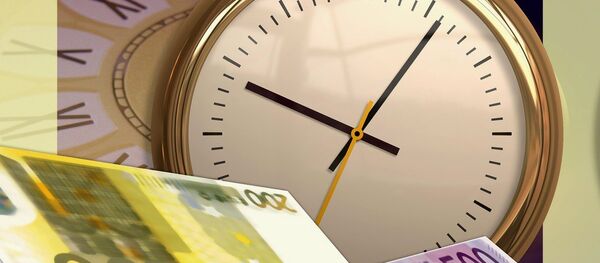Annualized euro area inflation dropped to negative 0.1% in September, in line with the more pessimistic previous estimates. The unemployment rate was flat at 11% across the 19 nations of the common currency area. Both figures were provided in a report by the Luxembourg-based Eurostat.
Falling energy and commodities prices, coupled with rising wages and employment in the region's most developed nations like Germany and Italy, contributed to the decline in the core prices index. ECB President Mario Draghi had said previously that the regulator might consider implementing monetary stimulus in order to boost inflation as negative dynamics in the core prices index are harmful for economic growth. Currently, the ECB is planning to purchase the equivalent of $1.2 tln in European assets before wrapping up stimulus in September 2016, but the volume of assets to be purchased might be increased in order to bolster prices.
The Eurozone's energy prices in September were 8.9% lower than a year ago. Meanwhile, the prices index excluding food and energy is still flat at positive 0.9%.
Inflation in the Eurozone had hit positive 3% just before the debt crisis in 2011, and had steadily declined thereafter, dropping as low as negative 0.5% in early 2015. To address that challenge, the ECB enacted its stimulus policies in February-March 2015. Subsequently, the core prices index returned to positive territory, while previously-faltering growth accelerated as well. However, amid the currently significant growth, an expansion in policy stimulus might be too risky in terms of the Eurozone's financial stability.
Amidst the anticipation of wider asset purchases by the ECB, investors have ditched the euro-denominated assets. The euro dropped 0.4% to $1.1205 and 0.7% against GBP. However, the euro is still on an upward trend due to Germany's massive current-account surplus.
Adding stimulus would be too risky for the region's financial stability, as the currently ultra-affordable credit and optimistic expectations regarding economic performance are creating promising opportunities for asset speculators, rendering wild swings in assets value possible in the nearest perspective.
Nonetheless, the ECB might be a tad too optimistic in their risk-assessment. Several sources have noted that the regulator might prolong their asset purchases until mid-2018, expanding the program to 2.4 tln euros, which is almost twice the currently planned volume of assets to be bought.
This outgoing month, the ECB was expecting the common area's growth to accelerate to 1.7% in 2016, with inflation remaining at 1.1%. It is quite likely that the regulator will only add stimulus if the economy fails to perform in accordance with such a scenario.





